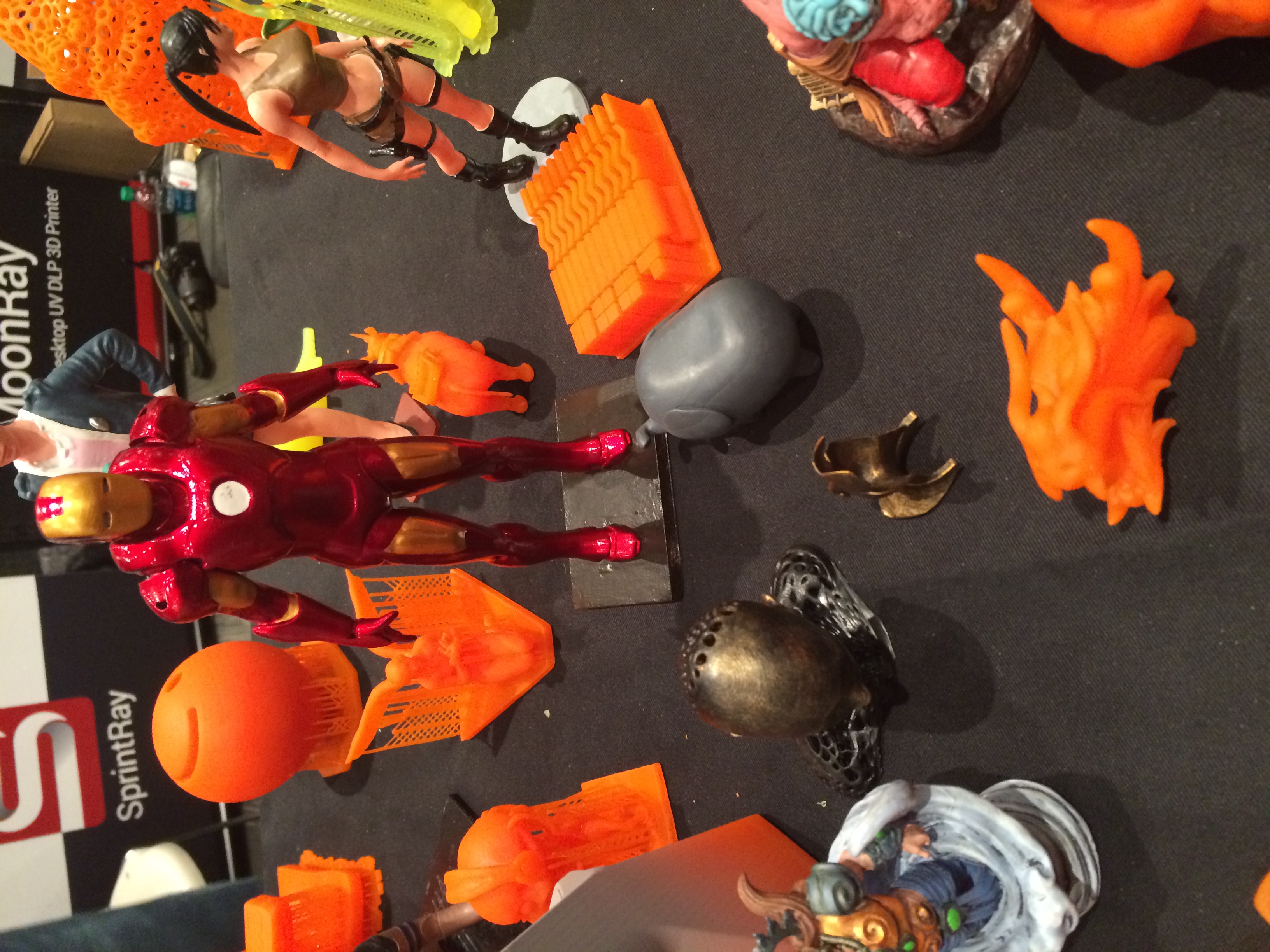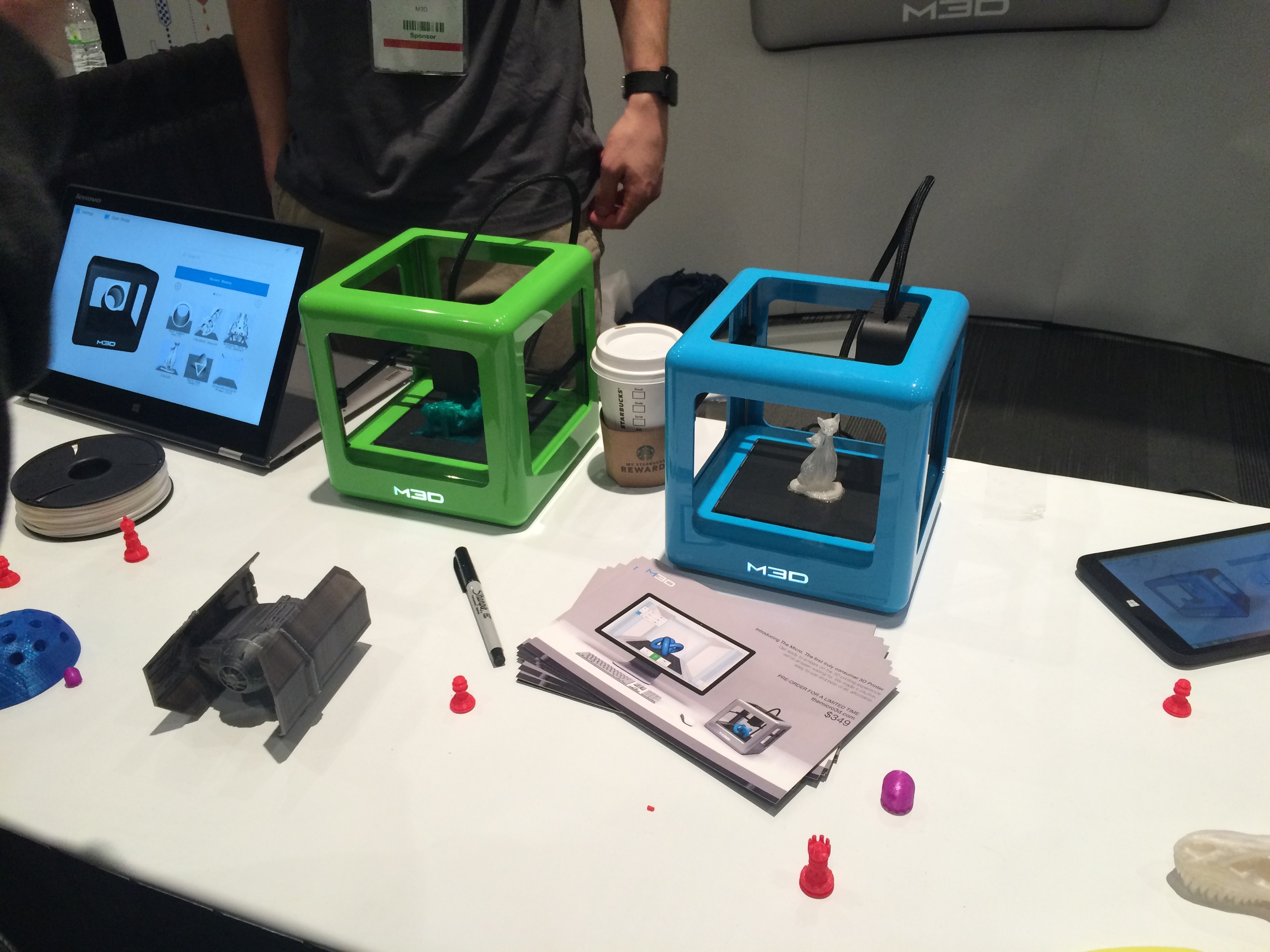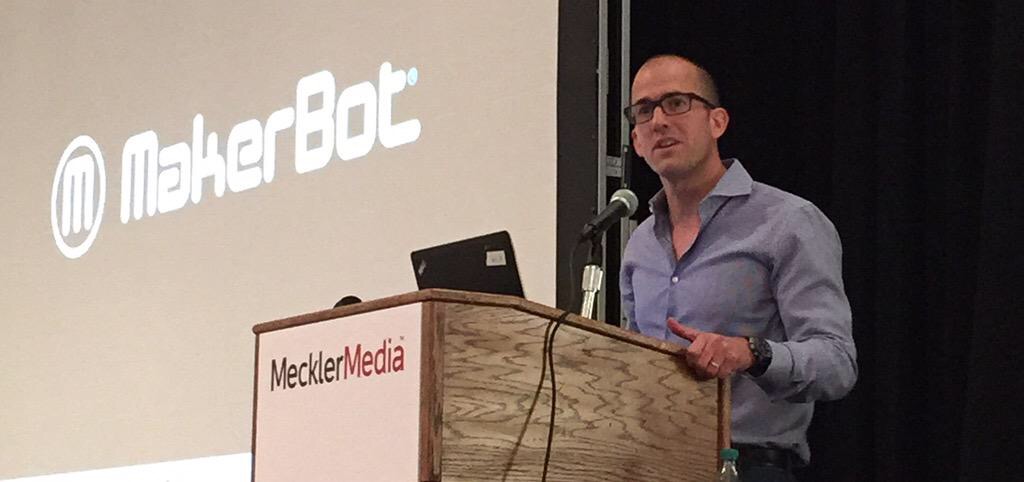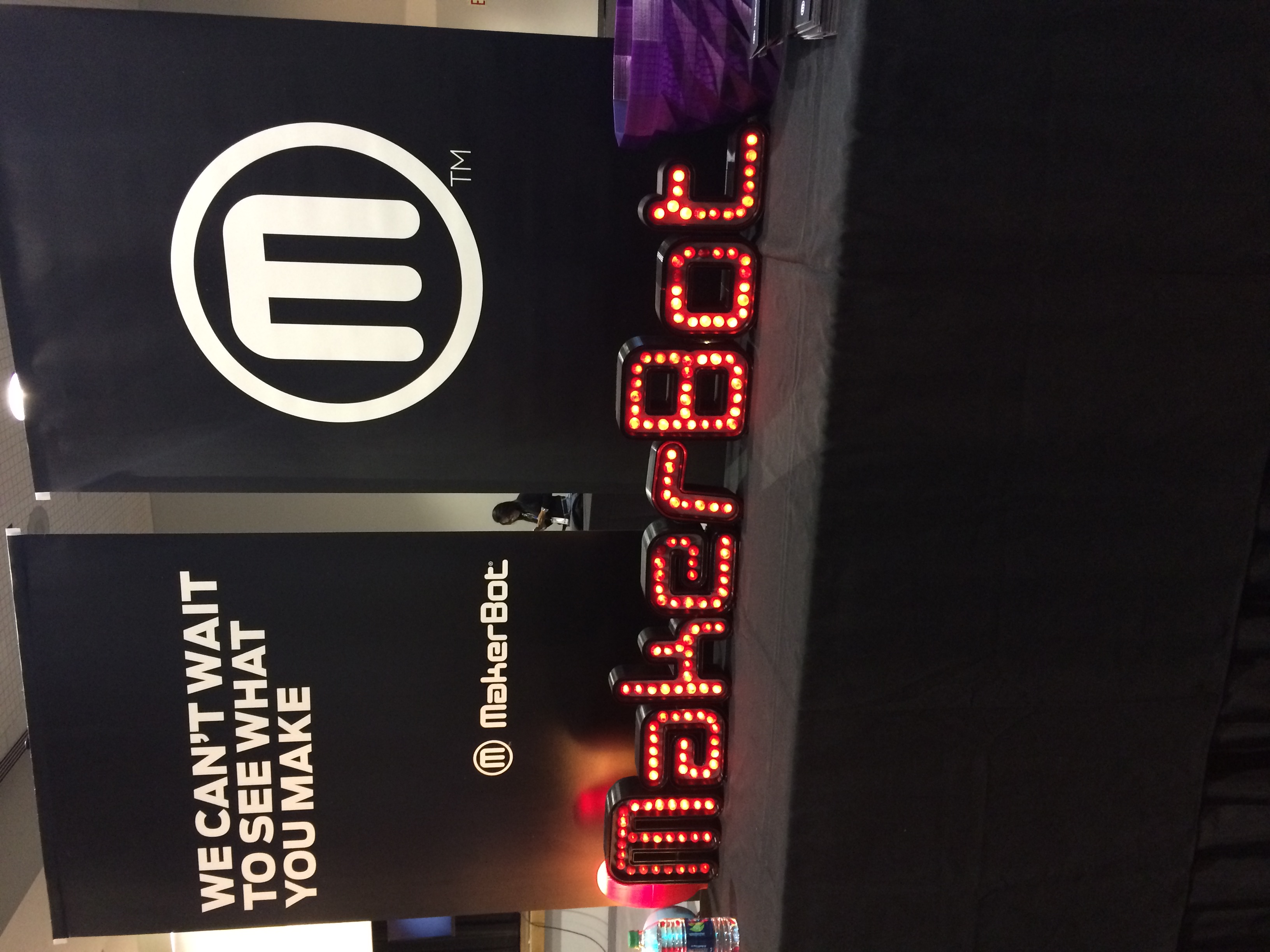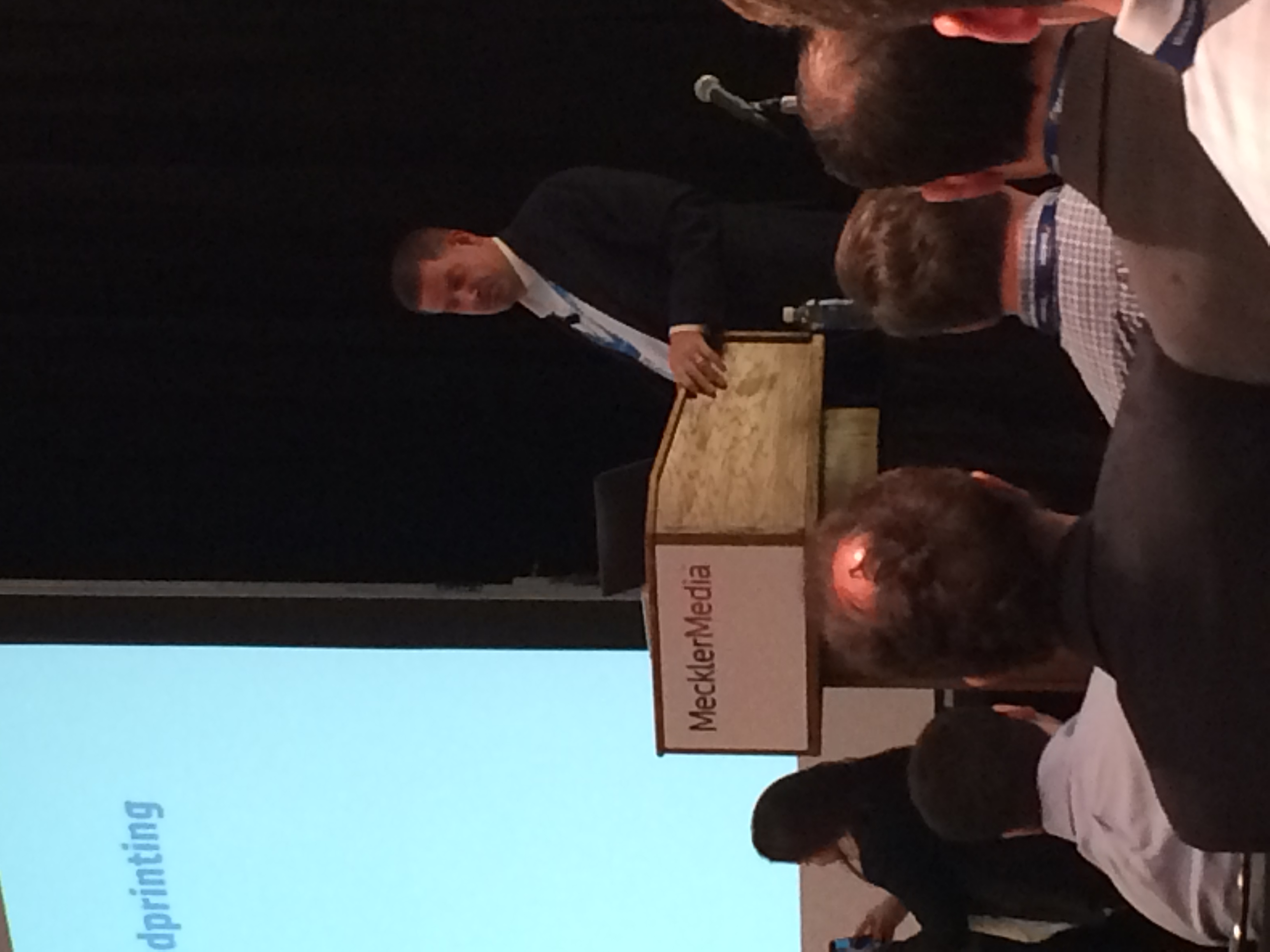We Connect the Dots recently funded a trip for one of our first ever Student Ambassadors, Caeley Looney, to attend the Inside 3D Printing Conference at the Javit's Center in NYC this past April. Hosted by Meckler Media, the I3D Print Conference was a gathering of the most innovative companies and individuals in the emerging world of 3D printing technology, and because our students has such a passion for the industry as a whole, her ask was for WCTD to fund her trip to the city to see it all happen. We were happy to accommodate Ambassador Caeley's request, as she has been such an integral part of shaping how this organization reaches out to students and designs educational programs for them. Without her hard work and dedication to both our students and our volunteers, WCTD would not be where we are today. Our only condition was that Caeley would have to return to us after the conference and teach us all about her experience and what she learned while she was there. In addition, Caeley will be presenting on 3D printing at our upcoming conference this summer at NYIT. Caeley was also generous enough to write about her experience and share it with us upon her return. Please read below...
3D printing is often considered to be at the leading edge of technology. Companies are leveraging all they can from this growing industry, and the current trend is shifting drastically toward getting on board with the 3D Printing movement and taking it to the next level. The Inside 3D Printing Conference in NYC this past April showcased what was up and coming in 3D Printing and I was able to be right in the center of it.
If any of you had the chance to attend for yourself you would know how incredible this conference was. One of the speakers I was privileged enough to listen to actually considered 3D Printing "the next big thing," as it is revolutionizing practically every industry out there. So you can understand what it was like to be there, allow me to outline the conference venue for you to create a better picture: You first walk into the Jacob Javit’s Center and you see the registration tables. After you ride the escalators down just one floor you can see the Exhibit Hall. The Exhibit Hall was my personal favorite. This was where companies showcased what their innovation in 3D Printing brought to the world. This is where you could meet CEOs from these companies, have down to earth conversations with inventors, and have some fun with 3D Printers while you were at it. Next to that was the Design Show. This was an amazing part of the conference because it showcased the capabilities of modern day 3D Printing. The Design Show is where you saw 3D models galore, and this is where MakerBot set up all of their printers for the public view. Finally there were the speaker rooms. These rooms were where I spent most of my time listening to the inspiring words of executives, innovators, and developers, trying to gain insight on how to develop curriculum for the upcoming We Connect the Dots Creating STEAM Conference.
The first day was truly incredible. After picking up my badge from the registration table, I walked straight to the opening keynote made by J Scott Schiller, the Worldwide Director of HP 3D Printing. He spoke about "The Shape of Things to Come," which was a keynote all about what was up and coming from HP. Hewlett-Packard is currently working on designing innovative 3D Printers that use chemical based fusion of materials to print sturdier and more detailed designs for products. Schiller also discussed how the world of 3D Printing is evolving. He explained that innovators can take their work to the next level with this new founded technology, and because of this, our society is experiencing exciting times in the world of STEM. Following this, I was able to wander around the Exhibit Hall for a bit. While I was wandering I was able to network with people, such as the CEO of MakerOS. MakerOS is an emerging company that has developed software similar to MakerBot's Thingiverse, allowing creators and makers from all over the world to develop and share their models, estimate print costs, and continue to be creative. After the Exhibit Hall I went to my favorite session (and for those of you who followed my Twitter posts, you know exactly what I'm talking about): 3D Printed Desserts. I was able to see the schematics for 3D Printers such as the CocoJet, which prints out chocolate. It was absolutely amazing to see more applications of 3D Printing outside of what the public typically knows. The highlight of my day was the CEO of MakerBot, Jonathan Jaglom's keynote called "Twelve Years from Now." This talk was all about the future of 3D Printing from Jaglom's perspective. As the CEO of MakerBot, he truly is at the cutting edge of this developing industry, and he believes that there are still many new levels for this technology to experience. His excitement for the future had every audience member sharing his excitement, and personally, I know I can't wait to see what MakerBot has next for the world. I want to point out how incredible this experience was for me, because shortly after hearing this keynote I was able to meet Jonathan Jaglom at the MakerBot exhibit and talk to him about my endeavors and passion for 3D Printing, as well as how MakerBot can help WCTD with bringing their technology to our conference.
My first day was all about one thing: 3D Printing isn't just 3D Printing. I learned that there are so many more real world applications that are leveraging the concept of 3D Printing to revolutionize the world we currently know. Yes, you can look at a MakerBot and print out a trinket or design element in plastic, but 3D Printing isn't just fun and design, it goes way beyond that. 3D Printing is being used in bio-medical scenarios. There are 3D Printers that print cells and recreate tissue and hopefully, one day, organs for organ transplants. Could you imagine what the future could hold for bio-medical applications of 3D Printing? The opportunities are not only incredible, but they are endless. We live in a world where were are on the edge of innovation. New designs, ideas, concepts, and theories are being developed every single day, and the STEM industry is using 3D Printing to expand those boundaries. It doesn't stop there though. As I mentioned earlier, there are 3D Printers that print out food. The CocoJet is specifically used for chocolate, but there are endless possibilities. One agency taking full advantage of the leading edge of technology in food is NASA, as there is a food 3D Printer currently on-board the ISS, providing astronauts with a little more variety and better tasting food. Companies are working to revolutionize 3D Printing in every way possible, and they are all being successful. Day one taught me that there is more to come, and I can't wait to see what is next.
My second day was just as amazing. April 17th was all about focusing on developing a curriculum for WCTD, and I think this conference allowed me to do just that. I followed the Education and Maker Track of the conference which discussed how to bring 3D Printing into education on a number of levels. These talks were exceedingly beneficial to me and my experience at the conference because they taught me exactly what I needed to know regarding how to bring 3D Printing to our CreatingSTEAM Conference. The first session was a panel discussion on how to bring 3D Printing to education, and the training required to be successful. I took away to major points from this panel. The first was to incorporate a learning method called "Design Thinking Methodology" which is used at both Stanford and MIT in their engineering programs. This concept is "maker oriented" and involves combined teams and similar assignments in order to bring people with different passions together to be successful on the same project. This idea allows for cross collaboration between people with different career goals; for example, business majors can work on the human factors part of the project and put their ideas into the designs that are developed by the engineering majors. Additionally, this teaching method was need, or problem, based. Students should be given a problem and asked to develop a solution that needs to meet functional requirements. The audience of this panel was asked this mind altering question: "What would you make if you had a machine that could make anything?" I learned the importance of asking yourself and your students this question at this conference. That is essentially what 3D Printers are; they're a machine that can make anything and they are available to anyone who wants to use them. Finally, the second thing I took away from this panel was a quote: "Failure is a crucial part of the project." Getting up and trying again is the key to success. Nothing happens the correct way the first time, and everything can always be improved. But, in order to be innovative, you need to fail and then learn from your failures to continue to develop new ideas. This is a very important quote that needs to be taught to students. They can't be afraid to fail, because fear of failure keeps them from thinking outside the box and taking risks that could be world changing.
The next few sessions were all about the same thing: actually developing a curriculum. So, rather than lay it all out for you here, I will let you attend the CreatingSTEAM conference and learn more about 3D Printing there, but I want to give a brief summary of my experiences at this conference as a whole, as well as give thanks to those who deserve it. Firstly, the opportunities I had by going to this conference, and the inspiring people I met were truly once in a lifetime events. None of that would've been possible without the support of We Connect the Dots and their Student Ambassador Program. Secondly, now that you've heard what the speakers at this incredible conference told me to take away from this, I hope I can express to you what I want you to take away from reading this blog post. If there is anything you should remember, it is that the world is constantly changing. Industry is always adapting to these changes, society is adapting to these changes, and the people around you are adapting too. 3D Printing is a huge part of this changing world, and I promise that you will continue to see it in positive headlines later. There is a world of opportunities with 3D Printing out there, and students need to adapt to this ever changing world and take these opportunities now. Finally, thank you for reading this, I hope you enjoyed it and I hope you get the chance to experience 3D Printing to the same capacity I did someday, it really is worth it!



